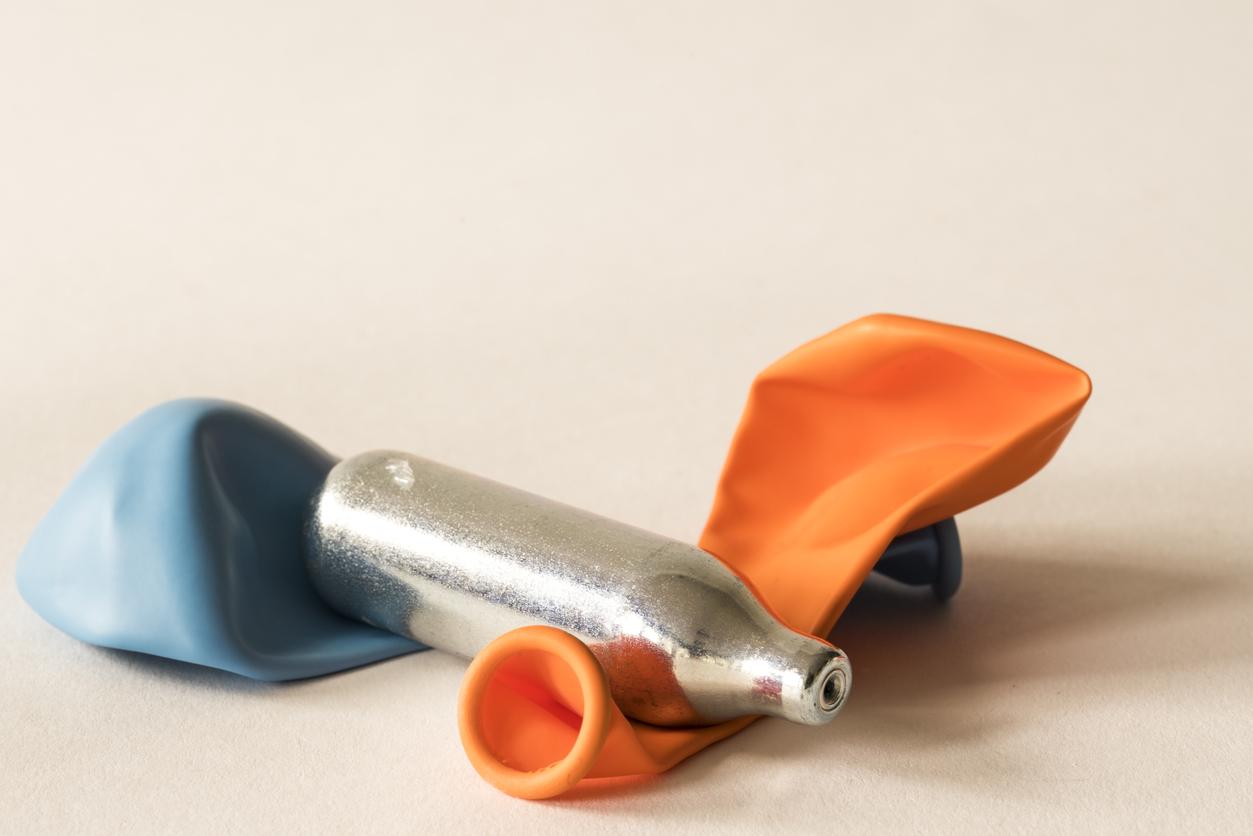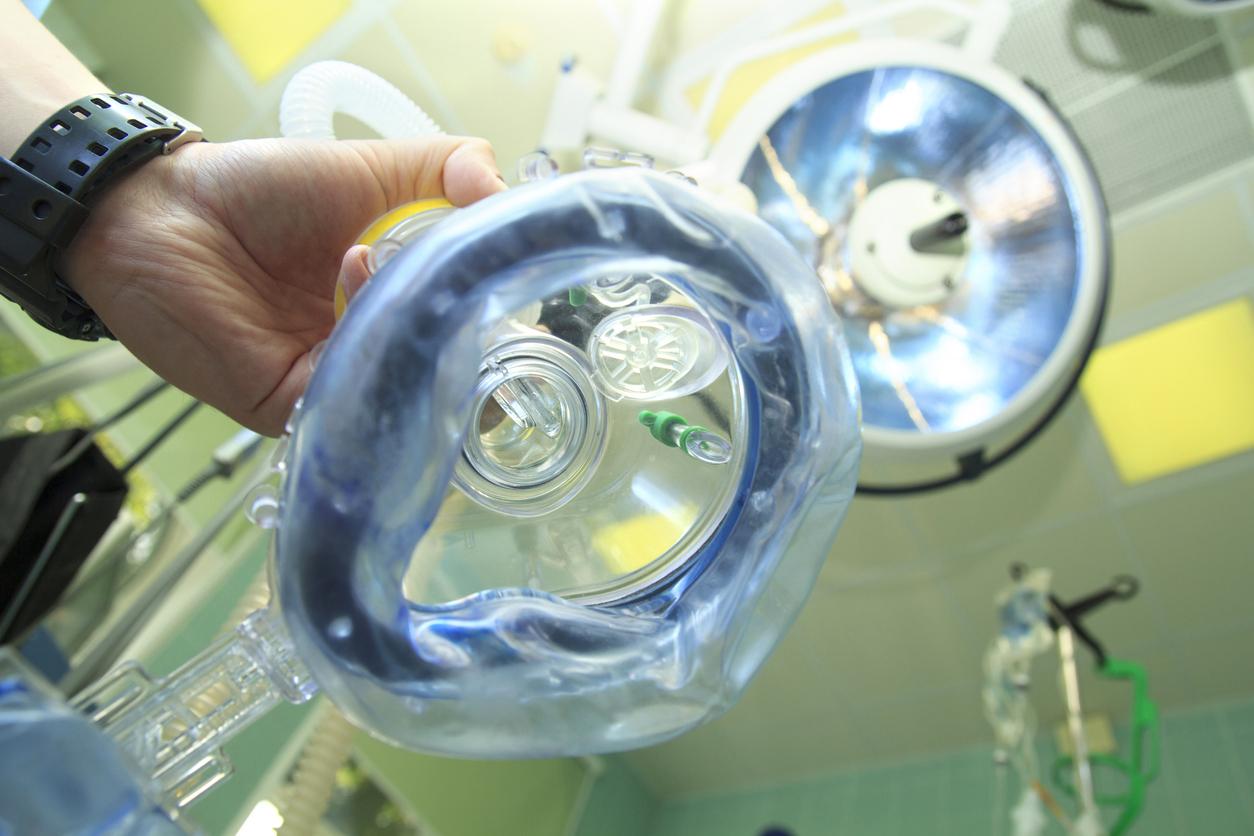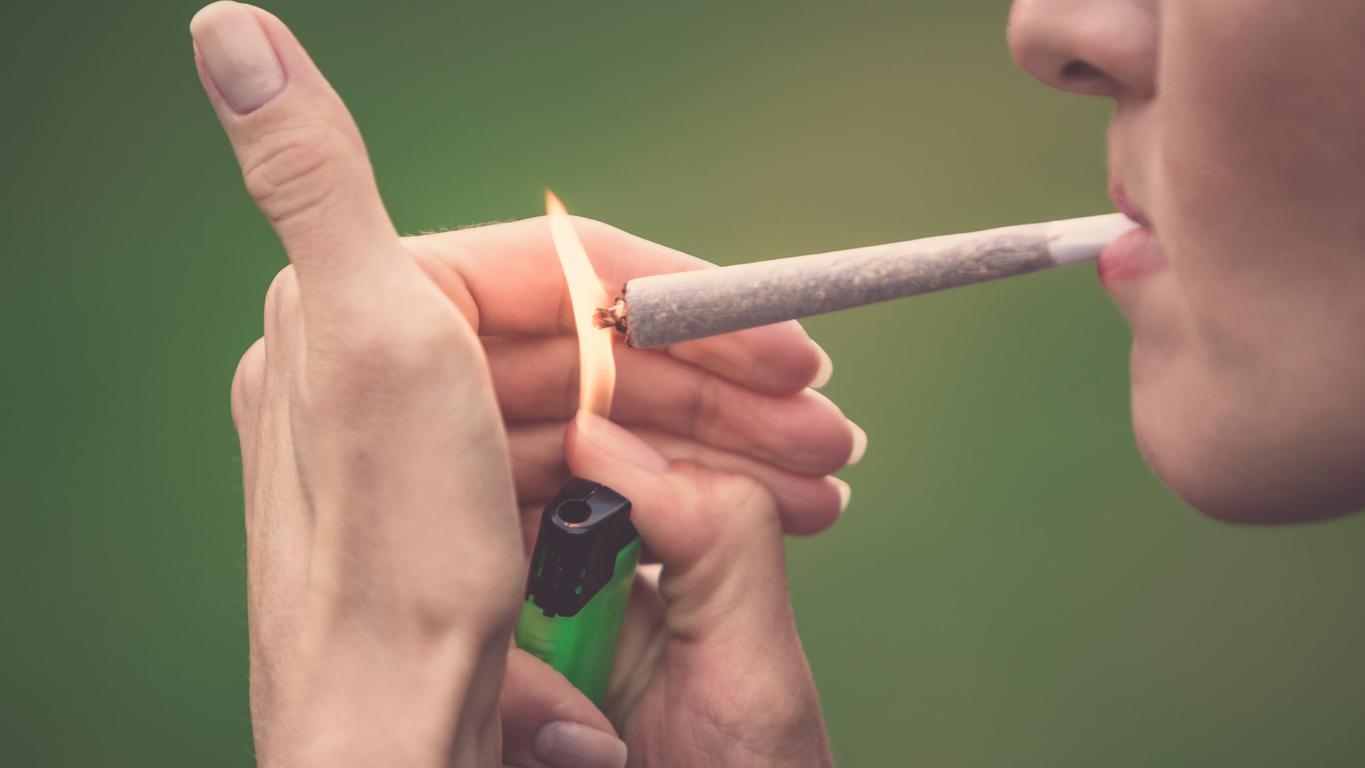The number of serious poisonings with nitrous oxide, also known as “laughing gas”, has tripled between 2020 and 2021. This cheap drug consumed via balloon is increasingly popular, especially among young people.

- The effects sought by users of nitrous oxide are uncontrolled laughter, the feeling of drunkenness and euphoria as well as visual and auditory distortions.
- The interruption of consumption causes a withdrawal syndrome, with anxiety, agitation and tremors.
- Since June 1, 2021, a law prohibits the offering or sale of nitrous oxide to any minor.
Taking it just once can lead to a “loss of consciousness, a fall, burns” and the number of serious cases following the intoxications it causes has tripled between 2020 and 2021. It is nitrous oxide, also called “laughing gas”, whose cartridges you may have noticed at the bend of a sidewalk. Christelle Ratignier-Carbonneil, doctor in immuno-haematology and director general of the ANSM, alerts public opinion to the significant increase in nitrous oxide poisoning, in an interview published on Wednesday January 18 by The Parisian.
“Nitrous oxide has become an important public health concern”
“We went from 82 cases in 2020 to 265 in 2021. Nitrous oxide has become a major public health concern”, says the director of the health agency. This rise in cases is linked to an interest in laughing gas that is spreading more and more among young people.
Originally, nitrous oxide was used in medicine as an anesthetic and analgesic, and in cooking, where it was present in the cartridges of whipped cream dispensers. Its misuse consists of inhaling the gas through a balloon, after having “cracked” the cartridge to open it. The euphoric effects it produces when inhaled, earned it its nickname “laughing gas” and contributed to its growing popularity. Especially since it is cheap and relatively easy to get on the Internet, especially via social networks like Snapchat or Instagram, despite the risks associated with its consumption.
Laughing gas: why is it dangerous?
The problem is that inhaling nitrous oxide can cause multiple side effects, ranging from simple dizziness, risk of falling or burns from the cold gas, to asphyxiation and loss of consciousness. On top of that, says Dr Ratignier-Carbonneil, “we discover new cardiovascular complications with thrombotic effects” (formation of blood clots in the veins). She adds that in the most severe cases of addiction, taking this gas regularly can lead to death. In addition, in a report published on November 16, 2022, the National Health Security Agency (ANSES) and the ANSM were also alarmed by an increase in cases of neurological damage.
In this context, the ANSM has just published a document intended for health professionals to help them identify the symptoms suggestive of nitrous oxide poisoning and to take care of a person in a situation of poisoning. Finally, addiction problems can also quickly occur. The ANSM observes a much more “significant” and “repeated” use among young people aged 22, on average, mainly men between 20 and 25 years old, often in a festive setting.


















